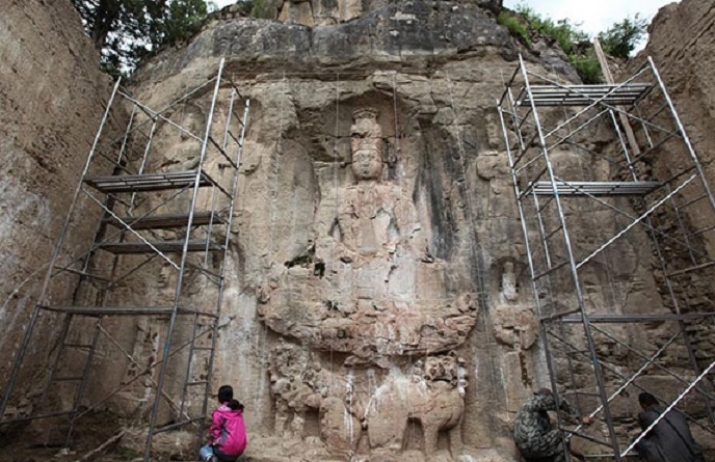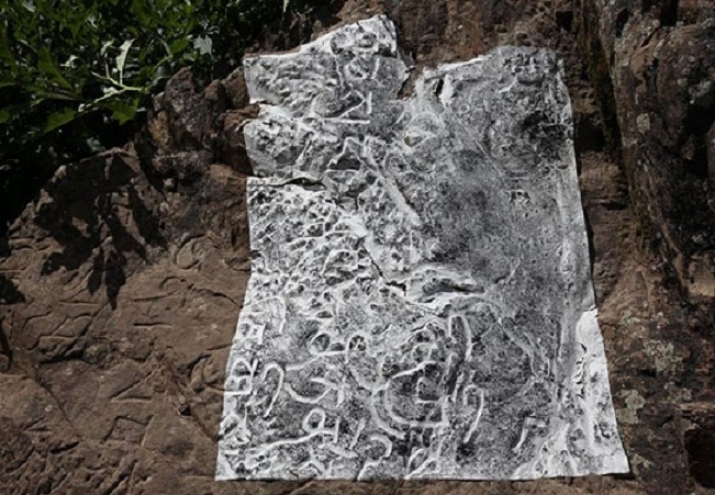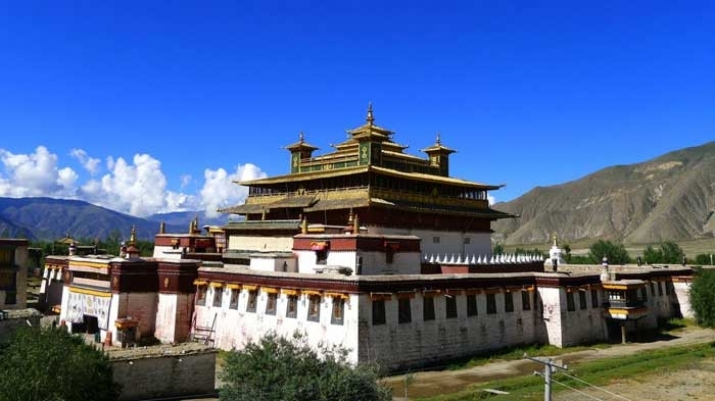NEWS
Eight Rock Carvings from Tibetan Empire Era Discovered in Chamdo Prefecture, China
 Carving of a Tibetan bodhisattva. From archaeologynewsnetwork.blogspot.com
Carving of a Tibetan bodhisattva. From archaeologynewsnetwork.blogspot.comCenturies before the four major Vajrayana schools was the fabled Tibetan Empire (618–842). Called “Bod” by its subjects and referred to as “Tubo” and (erroneously) “Tufan” in the Old Book of Tang in 945, the empire’s irruption into the politics and culture of medieval Eurasia has shaped the history of the region ever since. Over the second half of 2016, a team of over 20 people comprising four experts from Sichuan University’s Tibetology Institute and representatives from Markham County’s cultural relics bureau discovered eight rock carvings in Markham County, Chamdo Prefecture, which date back to a high point of the Tibetan imperium.
According to Zhang Yanqing (whose Tibetan name is Palchen Dorjee), a professor at Sichuan University’s Tibetology Institute, the rock carvings date back to either the reign of emperor (tsenpo) Trisong Detsen (r. 755–97) or his youngest son, Tridé Songtsen (r. 798–815), better known as Sadnalegs. (ChinaDaily.com.cn)
The carvings are distributed across eight sites in the county’s three townships and consist of cliffside carvings, engraved statues, petroglyphs expressing Tibetan texts, and Mani stones: stone plates or rocks of varying shapes and sizes inscribed with the six syllabled mantra of Avalokiteshvara, patron bodhisattva of old Bod as well as modern Tibet. “Judging from the costumes of the inscribed figures, we decide these inscriptions [sic] were made in the second half of the 8th century or the first half of the 9th,” said Zhang. (Tibet.cn)
 Petroglyphs dating back to the Tibetan Empire. From archaeologynewsnetwork.blogspot.com
Petroglyphs dating back to the Tibetan Empire. From archaeologynewsnetwork.blogspot.comHe Fanhua, a representative of the cultural relics bureau, said: “Our bureau will now propose to higher cultural relics units that measures be taken to protect the petroglyphs,” stating that the preservation was essential because some of the petroglyphs are located less than 600 meters from the nearest villages. (ChinaDaily.com.cn)
According to Zhang, the inscriptions are evidence of a long history of cultural and artistic exchange in the region and are influenced by a number of styles, including Indian and Chinese. “As both Buddhist art and a historical find, these carvings are of great value and should be protected,” he said. (ChinaDaily.com.cn)
The Tibetan Empire was a political entity that held together parts of Bangladesh, Afghanistan, Nepal, Bhutan, India, northern China, Myanmar, Pakistan, and Central Asia. Trisong Detsen is seen in Tibetan historiography as the second of three kings of Dharma (chos gyal), monarchs who were instrumental in introducing the Dharma to Tibet and consolidating it as a crucial part of Tibetan culture. The other two kings are Songtsen Gampo (r. c. 629–49) and Tritsuk Detsen (r. 815–36), better known as Ralpacan.
 Samye Monastery. From tibettravel.org
Samye Monastery. From tibettravel.orgTrisong Detsen is particularly famous to Buddhist historians for inviting the master Shantarakshita and tantric mystic Padmasambhava to Tibet, constructing Samye, Tibet’s first Buddhist monastery, which was completed sometime around 779, and hosting a debate between a Chan monk called Moheyan and Kamalashila. Kamalashila’s victory is commonly cited as the reason why the Tibetan court chose to promulgate the “Indian” version of Buddhism over the Chinese Chan path, although this is historically dubious and the reasons for and nature of the debate have been contentious points of argument for Tibetologists. Tride Songtsen continued the pro-Buddhist policies of his father as well as his geopolitical manouvering. He was at war with Tang China (618–907) between 799 and 803.
While the Tibetan Empire came to an ignominious end in 907, torn apart by succession crises and civil war, the art and artifacts it has left behind ensure that its heritage in China is not forgotten. ChinaDaily.com reported that many stone carvings had already been uncovered in Markham County over the years, including a large statue of the Vairocana Buddha found in 2011, which is considered to be one of the three biggest in the Tibetan region.
See more
8 rock carvings from the Tubo period found in Tibet (ChinaDaily.com.cn)
Tubo period petroglyphs found in Tibet (Tibet.cn)
Tubo Period Petroglyphs Found In Tibet (Archaeology News Network)














